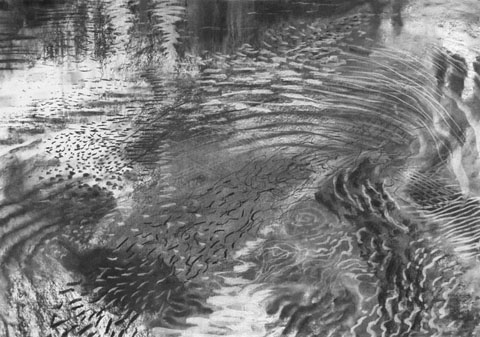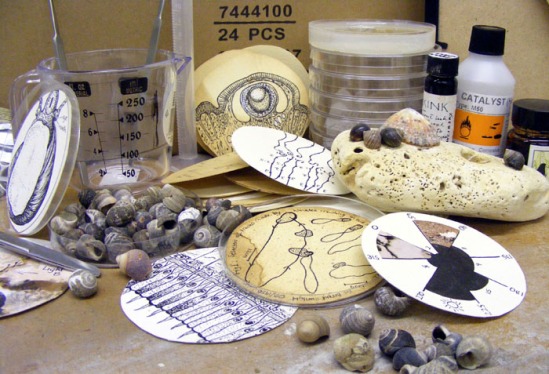Art and science. Unusual bedfellows, some might say. Not so for Anna Kirk-Smith. Our curriculum leader for Creative Futures and Fine Art lecturer has collaborative working down to an incredibly fine art.
Having initially trained as a vet, she then completed a HND in Illustration and an MA at the Royal College of Art, London, which focused on natural history and scientific collaboration.
“The two disciplines complement each other incredibly well,” says Anna who, among other roles is committed to writing the employer engagement strand of Hull School of Art And Design’s offering for the next seven years. “The inspirations, methodologies and practical aspects of science and art fuse to form hybrid works. I am becoming increasing intrigued by the communication of scientific thinking through visual means.”
Anna’s personal fine art practice, for example, includes research and conservation projects, commissions from the Wildlife Trust and work with the scientists of Hull Geological Society.
 “My work is drawing based,” she explains, “as well as sculptures and paintings. I instigate the commissions I take on, so I get to choose my collaborators and subjects.”
“My work is drawing based,” she explains, “as well as sculptures and paintings. I instigate the commissions I take on, so I get to choose my collaborators and subjects.”
Anna has exhibited her sci-art work extensively in solo and group shows, recently in the 2011-13 Ghosts Of Gone Birds exhibitions in Shoreditch a project that saw 120 artists including Sir Peter Blake and Ralph Steadman each create a work of art around an extinct species – in Anna’s case, a spectacled cormorant. The exhibition also led to an personal book collaboration with an academic from Williams-Mystic College in Connecticut.
“I really enjoy the research aspects of the projects that I do,” she says. “That’s why I choose my projects – I select something I want to learn about and always make sure it’s a subject I know very little about. Hence joining Hull Geological Society.”
As an extension of this research, she expects to start a PhD based around the idea of sci-art collaboration in the near future. To this end, Anna – along with a poet, a sculptor, a fine artist and a silversmith – is currently engaging in geological research field trips around Flamborough Head , taught and led by the Flamborough Quaternary Research Group. This will result in a group exhibition opening in January 2014 at Studio 11 gallery, in Humber Street, Hull. The exhibition from there will tour nationally.
She has won numerous awards for her artwork, including the Mann Group Drawing Prize (2003), the Birdscapes Gallery Award (2009) and the Wildlife Trusts Underwater Award (2010).
Anna was for many years also a co-director of a social enterprise visual arts development company, ‘Create Big Skies’ – which she describes as a way of providing arts mentoring that will ultimately leave a legacy for the creative community in Hull and East Yorkshire. “I have now incorporated these experiences, the skills development and industry contacts into the new Creative Futures curriculum within the Faculty of Art.”
Naturally, Anna’s drive and dedication to creating a legacy for future students is vital to her roles at Hull School Of Art And Design.
“The USPs here include our employer engagement and the employability preparation we give our students,” she says. “Eventually, we aim to launch creative business spaces and studios for our graduates to rent. I’ve also just set up the Fine Art Alumni Association that we plan to use as a template for other courses. The whole point is to continually reinvigorate the arts scene in Hull.
“There are a lot of similarities between art and science. One’s trying to find a point and, through experimentation, one’s trying to prove a point.”
Whether sci-art collaboration is an aspect of the future of art in Hull remains to be seen. But for Anna Kirk-Smith, at least, it’s the natural conclusion.
- To find out more, visit Anna’s website www.annakirk-smith.com, or her Linked In profile.


